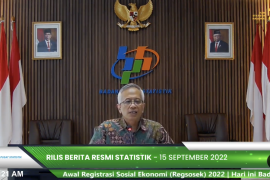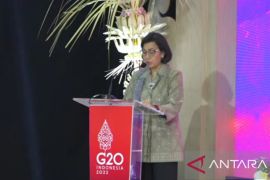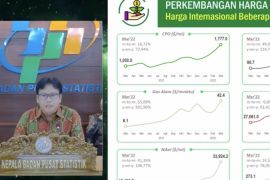It's predicted that coal price would increase to its highest of up to 21.5 percent.Bandung, W Java (ANTARA News) - A central bank official has predicted that the most strategic commodity prices would rise this year to boost exports as one of the important components to drive economic growth.
The Director of Bank Indonesias (BI) Department of Monetary and Economic Policies, Yoga Affandi, said here on Saturday that the prices of a number of commodities, such as copper, nickel, and aluminum that were corrected in 2016 due to weaker demand, would increase.
Several quarters believed that the recovery of the commodity prices is because the global economic growth is projected to rise, while investment will recover, and supply surplus problems will decrease, he stated.
Yoga predicted that coal price would increase to its highest of up to 21.5 percent.
"We have seen that the figures have been positive. We think 2017 would be a positive year," he added.
The price of copper, which was corrected by 11.7 percent in 2016, is predicted to increase by 12.4 percent in 2017, nickel by 1.7 percent, and aluminum 13.5 percent, he remarked.
Based on BIs study, the price of tin is also projected to increase by 15.2 percent this year, while prices of rubber and copper rice are projected to increase by 12.8 percent and 12.4 percent, respectively, despite the fact that the price of rubber last year was recorded at minus 4 percent and that of copper was recorded at minus 11.7 percent.
The bank has also predicted that the price of coffee will rise by 8.7 percent, nickel by 1.7 percent, and other commodities by 1.5 percent.
The price of palm oil this year is projected to increase by 5.3 percent, which is lower than last year at 19.8 percent.
"BI thinks the increasing prices of commodities would improve revenues from non-oil and gas exports, and this will strengthen the rupiah exchange rate," he remarked.
In view of the projection that the increasing commodity prices would boost exports, BI has predicted that Indonesias economic growth could reach from 5.0 to 5.4 percent this year, he stated.
The export improvement has also made BI predict that the current account deficit would be at 2.11 percent of the GDP, which is better than the earlier prediction and up compared to the realization in 2016, which was at 1.75 of the GDP, he added. (*)
Editor: Heru Purwanto
Copyright © ANTARA 2017











